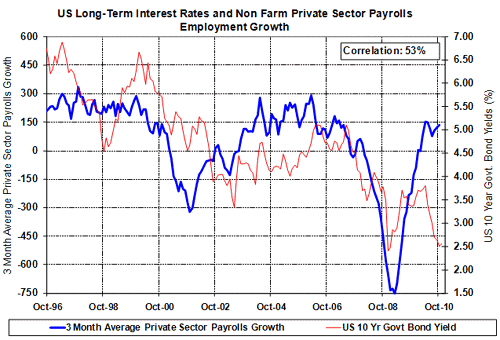

By Roger J Kerr
There are several reasons behind the increase in market interest rates over the last two weeks and investors/borrowers should expect that there are more rises to come.
The pessimistic/benign picture for the domestic economy that the RBNZ (and several other economic forecasters) painted a couple of weeks ago appeared out of date at the time they were made, and look even more off the mark today.
Recent data in immigration, employment and business confidence points to much more robustness in the domestic economy and this justifies the moneymarket’s pricing higher of one to three year swap rates.
The future movement scenarios for our interest rates can go one of two ways over the next six to nine months:
1. The NZD/USD exchange rate rapidly reverses from the spike to 0.7900 and returns to above/below the 0.7000 mark over coming months.
Under this scenario the GDP growth forecasts for 2011 stay at +3.5%, driven by expanding export industries.
The domestic economy steadily improves based on the additional income and spending starting in provincial New Zealand.
Market interest rates continue to increase and the RBNZ are forced to lift the official OCR rate earlier and by more, as their realise that the 2011 growth and inflation risks are higher than their current estimations. US long-term Treasury bond interest rates increase as US economic data continues to improve. Therefore our long-term three to 10 year swap rates rise further with the US increases.
2. The NZD/USD exchange rate remains up near 0.8000 as the USD stays weak on global currency markets.
Under this scenario the export-led economic recovery is stymied and exporters rapidly pull back from any expansion as the currency kills them.
GDP growth forecasts for 2011 would be required to be substantially lowered in this scenario and the inflation risks for the RBNZ are reduced due to imported consumer items going even lower in price.
The RBNZ would be forced to leave interest rates at current levels as monetary policy would be considered already tight with the high currency value.
Unsurprisingly, I strongly prefer the first scenario as having a much higher probability of occurring into reality. Therefore any borrower who has not fixed their interest rates to high levels already, has not too much time to secure rates before they move higher again.
The long-end of our yield curve continues to be driven by the US treasury bonds.
The US 10-year Treasury bond has not really decreased or increased following the US$600 billion Federal Reserve injection spread over eight months. As expected, it appears all the market buying of bonds took place ahead of the QE2 monetary policy package, however we have not yet seen any real selling on profit-taking since the announcement.
Over recent weeks US economic data has improved and last Friday’s Non-Farm Payroll employment statistics (a 150,000 increase in new jobs) showed that the Fed Reserve may be too pessimistic in their reading of the state of the US economy.
The chart below shows the connection between jobs and US 10-year Treasury bond interest rates. If the next ISM services report in early December is positive for continuing employment growth, the US bond market yields will be going upwards, not lower on Fed buying. The current US bond yield of 2.53% does not look sustainable if US jobs continue to grow at +150,000 per month.

--------------------
* Roger J Kerr runs Asia Pacific Risk Management. He specialises in fixed interest securities and is a commentator on economics and markets. More commentary and useful information on fixed interest investing can be found at rogeradvice.com
4 Comments
Quite right Roger....Ben will solve all the problems by printing trillions and our farmers are rolling in the wealth and off to town to splurge and spend and all the unemployed and unemployable will find jobs and Bill English will wallow in the tax revenue and start paying down the tens of billions in debt and the households will all discover the gold nuggets under the floorboards and pay off the 180 billion in debts they have......or maybe not!
Roger, please take notice of the high dollar, Interest Rates will ony make things worst, better save those rate rises for another few months down the road.
Well of course interest rates are going to go up, Roger, everybody knows that. The question has never been if, but when and by how much.
In your words:-
Recent data in immigration, employment and business confidence points to much more robustness in the domestic economy and this justifies the moneymarket’s pricing higher of one to three year swap rates.
This country sorely needs that robustness in its domestic economy – in fact it’s a must have. And the last thing it needs is for it to be stymied or diluted as it picks up a head of steam by a premature increase in interest rates courtesy of the RBNZ. Holding off until some time around March next year looks pretty good to me.
You have confirmed yourself as an absolute muppet Mr. Kerr and will no longer read any of your articles because i can find better ways in which to lose 5 minutes of my life.

We welcome your comments below. If you are not already registered, please register to comment.
Remember we welcome robust, respectful and insightful debate. We don't welcome abusive or defamatory comments and will de-register those repeatedly making such comments. Our current comment policy is here.